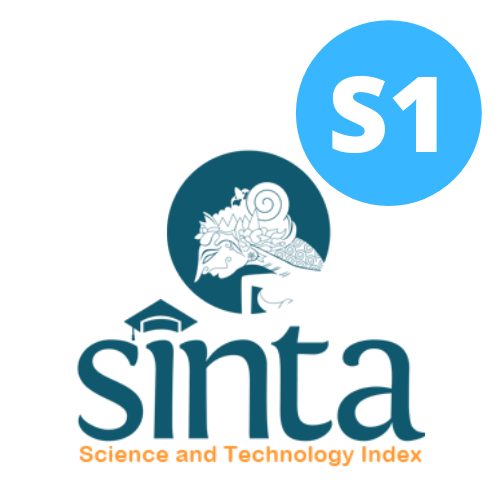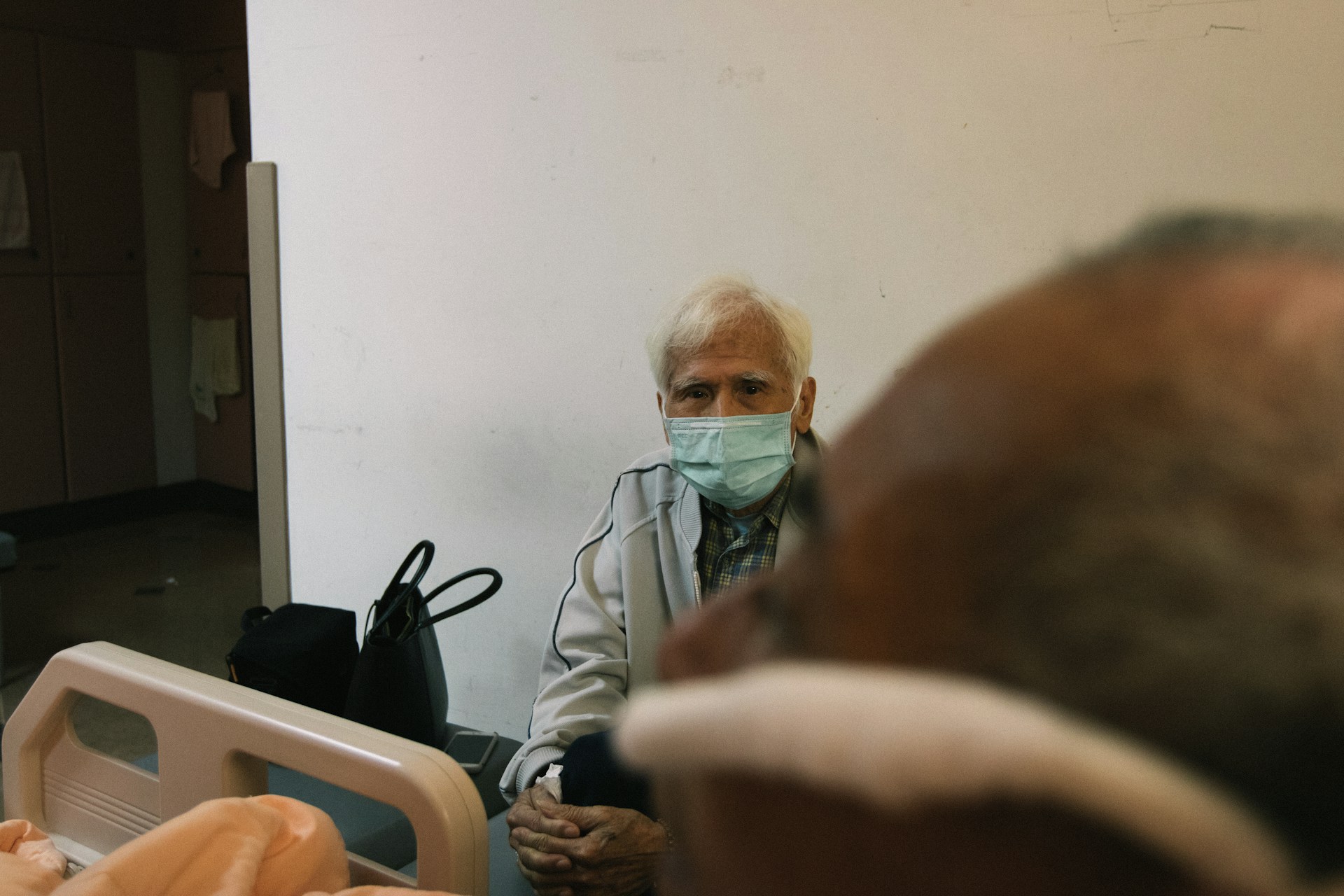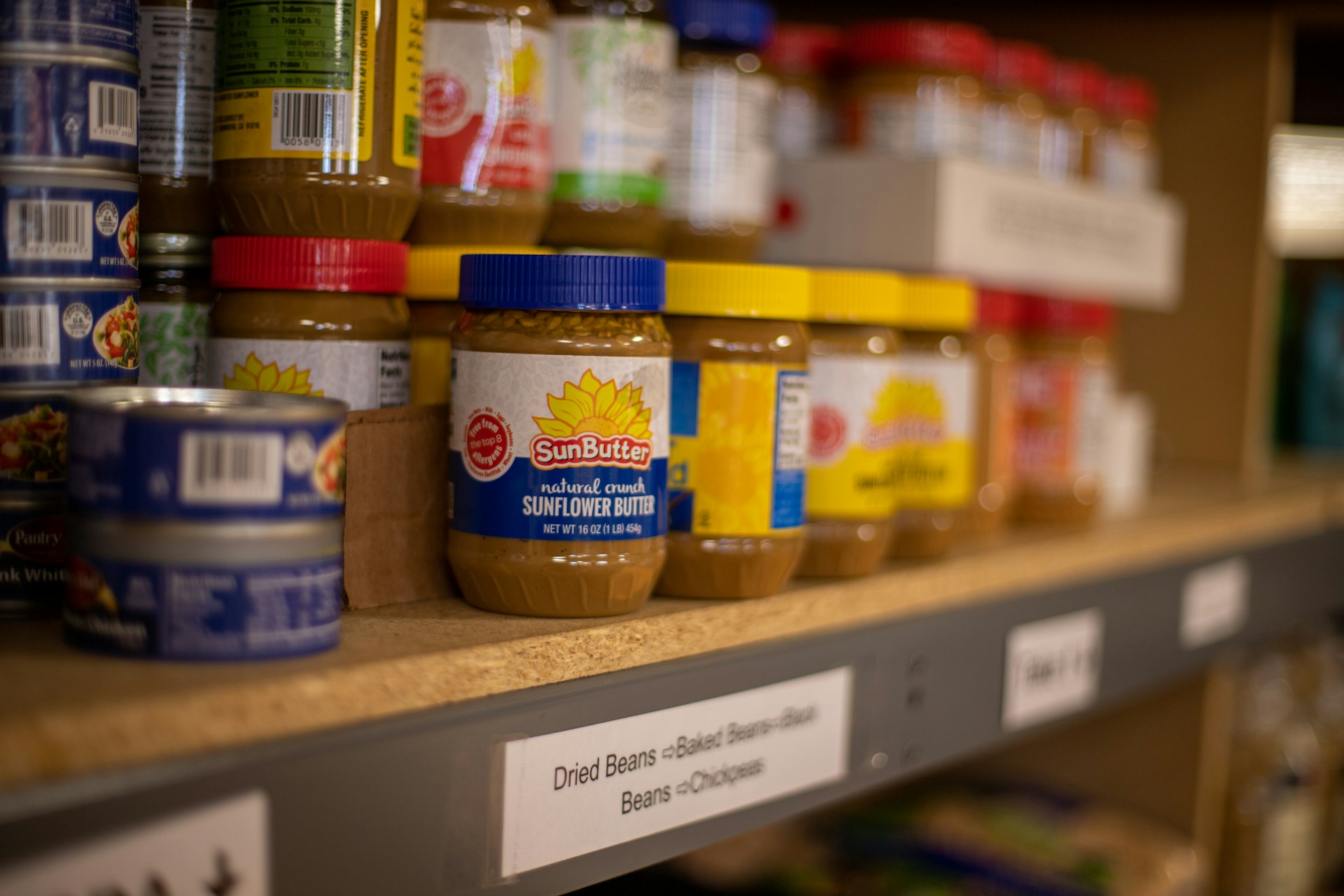The Effect of Food Accessibility on Family Food Preference Practices in Semarang during a Pandemic
Pengaruh Aksesibilitas Bahan Pangan terhadap Praktik Pemilihan Makanan Keluarga di Kota Semarang selama Masa Pandemi

Downloads
Background: The COVID-19 pandemic has changed behavior and community's economic activities in Indonesia, resulting in a decrease in family food security. Good family food security is indicated by adequate food availability both in quantity and quality. Food resources should be safe, diverse, nutritious, evenly distributed, and accessible.
Objectives: This study aims to analyze the effect of accessibility to family groceries on family diet practices in Semarang City during the COVID-19 pandemic.
Methods: This cross-sectional study was conducted online in Semarang City in 2022. A total of 108 mothers of elementary school students were recruited using a purposive sampling technique. Data on general characteristics were obtained from an online questionnaire, while data on distance, affordability, sources of health information, and diet practices were obtained using a questionnaire which was then scored. The statistical analysis was conducted using the Chi-Square test with a significance level of 0.05.
Results: The age of the mothers ranged from 36-45 years (64.8%); most of the mothers had a bachelor's degree (93.5%); the mothers worked (50.9%); the family income level was above Rp 2,800,000 (89.8%). Accessibility to information sources was limited in most cases (57.4%); the mothers' purchasing accessibility was high (63.9%); and they mostly could access food sources (71.3%). Most of the mothers had good diet practices (66.7%). Variables that showed a significant relationship with diet practices were accessibility to foodstuff (p = 0.001). Other variables that contributed to diet practices were the mothers' education (p = 0.040), occupation (p = 0.002), and family income (p = 0.006).
Conclusions: There was a relationship between accessibility to food and diet practices.
Syakirotin, M., Karyani, T. & Noor, T. I. Ketahanan Pangan Sebelum dan Selama Pandemi Covid-19 di Kabupaten Bandung. Jurnal Ilmu Pertanian Indonesia 27, 473–491 (2022).
Ceylan, F. R. & Ozkan, B. Assessing impacts of COVID-19 on agricultural production and food systems in the world and in Turkey. Gaziantep University Journal of Social Sciences 19, 472–485 (2020).
Jensen, A. C., Rabbitt, M. P., Gregory, C. A. & Singh, A. Household Food Security in the United States in 2020. U.S. Department of Agriculture : Economic Research Report No. ERR-29, (2021).
Byker Shanks, C., Houghtaling, B., Shanks, J., Grocke-Dewey, M., Webber, E., Andress, L., Hardison-Moody, A., Patton-Lopez, M. & Haynes-Maslow, L. Disparities in dietary practices during the COVID-19 pandemic by food security status. Preventive Medicine Reports 28, 101830 (2022).
Akrasi, R. O., Eddico, P. N. & Adarkwah, R. Income Diversification Strategies and Household Food Security among Rice Farmers : Pointers to Note in the North Tongu District of Ghana. 8, 77–88 (2020).
Zaelani, M. Z. & Rachmah, Q. Sistem Ketahanan Pangan Daerah pada Masa Pandemi Covid-19 : A Literature Review. Media Gizi Kesmas 10, 291 (2021).
Hasanah, E. A., Heryanto, M. A., Hapsari, H. & Noor, T. I. Dampak Pandemi Covid-19 Terhadap Pengeluaran Pangan Rumah Tangga Miskin Perkotaan : Studi Kasus Kelurahan Ciroyom, Kecamatan Andir, Kota Bandung. Jurnal Pemikiran Masyarakat Ilmiah Berwawasan Agribisnisgribisnis 7, 1560–1571 (2021).
Mardiyah, S., Dwiyana, P., Wicaksono, D., Sitoayu, L. & Mardiyah, S. Dampak Pandemi Covid-19 terhadap Perubahan Perilaku Makan Mahasiswa di Indonesia. Amerta Nutrition 6, 1–8 (2022).
Jansen, E., Smith, K., Thapaliya, G., Sadler, J., Aghababian, A. & Carnell, S. Associations of mothers' and fathers' structure-related food parenting practices and child food approach eating behaviors during the COVID pandemic. Physiology and Behavior 252, 113837 (2022).
Novianti, S. Faktor Aksesibilitas Dan Praktik Pemberian Makanan Pada Anak Di Masa Pandemi. Jurnal Kesehatan Komunitas Indonesia 16, 165–178 (2020).
Rahmi, D. M. & Fadjar, N. S. Pengaruh Pendapatan, Kesesuaian Harga Kebutuhan Pokok, Kebiasaan Berbelanja, Dan Kesadaran Kesehatan Tehadap Pola Konsumsi. Journal of Development Economic And Social Studies 1, 539–549 (2022).
Manyong, V., Bokanga, M., Akonkwa Nyamuhirwa, D. M., Bamba, Z., Adeoti, R., Mwepu, G., Cole, S. M. & Dontsop Nguezet, P. M. COVID-19 outbreak and rural household food security in the Western Democratic Republic of the Congo. World Development Perspectives 28, 100469 (2022).
Ngadi, N., Meliana, R. & Purba, Y. A. Dampak Pandemi Covid-19 Terhadap PHK Dan Pendapatan Pekerja Di Indonesia. Jurnal Kependudukan Indonesia 2902, 43 (2020).
Syafrida, S., Safrizal, S. & Suryani, R. Pemutusan Hubungan Kerja Masa Pandemi Covid- 19 Perusahaan Terancam Dapat Dipailitkan. Pamulang Law Review 3, 19 (2020).
Santosa. Analisis Dampak Pandemi Covid 19 Terhadap Perekonomian Lokal dari Sudut Pandang Jenis Pekerjaan dan Pendapatan Terhadap Tingkat Daya Beli Masyarakat di Jawa Tengah. Jurnal Kesehatan Masyarakat 4, 253–267 (2020).
Badan Pusat Statistik. in (Badan Pusat Statistik, 2020).
Pratomo, Y. S. & Daenie, M. Mewujudkan Kebijakan Pembangunan Ketahanan Pangan di Kota Semarang. Public Service and Goverment Journal 2, 1–11 (2021).
Badan Pusat Statistik. in 1–15 (Badan Pusat Statistik Kota Semarang, 2021).
Hakiki, G. in (ed. Tangga, S. S. R.) xii+156 (Badan Pusat Statistik, 2020).
Badan Pusat Statistik. in 36–37 (Badan Pusat Statiktik Kota Semarang, 2021).
Leech, N. L., Barrett, K. C. & Morgan, G. A. SPSS fo Intermediate Statistics, Use dan Interpretation. (Lawrence Erlbaum Associates Inc., 2005).
Farida, U. Pengaruh Aksesibilitas Terhadap Karakteristik Sosial Ekonomi Masyarakat Pedesaan Kecamatan Bumijawa Kabupaten Tegal. Jurnal Wilayah dan Lingkungan 1, 49–66 (2013).
Prasanti, D. Potret Media Informasi Kesehatan Bagi Masyarakat Urban di Era Digital The Portrait of Media Health Information For Urban Community in The Digital Era. IPTEK-KOM 19, 149–162 (2017).
Perdani, Z. P., Hasan, R. & Nurhasanah, N. Hubungan Praktik Pemberian Makan Dengan Status Gizi Anak Di Pos Gizi Desa Tegal Kunir Lor Mauk. Jurnal JKFT 1, 9 (2017).
Siahaya, A., Haryanto, R. & Sutini, T. Edukasi "Isi Piringku” Terhadap Pengetahuan dan Perilaku Pada Ibu Balita. Jurnal Penelitian Ksehatan Suara Forikes 12, 2019–2022 (2021).
Rachmi, C. N., Wulandari, E., Kurniawan, H., Wiradnyani, L. A. A., Ridwan, R. & Akib, T. C. in Panduan untuk Siswa 22–26 (Kementrian Kesehatan RI, 2019).
Kemenkes. Pedoman Gizi Seimbang. (Kementerian Kesehatan RI, 2018).
Carroll, N., Sadowski, A., Laila, A., Hruska, V., Nixon, M., Ma, D. W. L. & Haines, J. The Impact of COVID-19 on Health Behavior, Stress, Financial and Food Security among Middle to High Income Canadian Families with Young Children Nicholas. Nutrients 12, 1–14 (2020).
Fuji Maulidya, R., Limbu, R. & Romeo, P. Factors Related to Mothers' Habit in Making Breakfast for Their Children at MI Draul Hijrah Madani in Kupang. Journal of Community Health 4, 243–250 (2022).
Ramadhani, E., Agustini, F. & Amanah, D. POLA PERILAKU IBU RUMAH TANGGA SEBAGAI PENGGUNA MEDIA SOSIAL DI KOTA MEDAN. Jurnal Kajian Gender dan Anak 06, 17–28 (2022).
Saragih, E. E. H., Saragih, B. & Emmawati, A. Hubungan Pola Konsumsi Sayur dan Buah Terhadap Status Gizi Keluarga Selama Pandemi Corona Virus Disease-19 (Covid-19). Journal of Tropical AgriFood 5, 21–34 (2023).
Anggreny, Y. & Niriyah, S. Hubungan Tingkat Pendidikan Ibu Dengan Konsumsi Sayur Dan Buah Pada Anak Prasekolah. Community of Publishing in Nursing 10, 136 (2022).
Maudina, R., Mardinah, W. & Hendrawari, S. Hubungan Feeding Practice ibu Dalam Pemberian Nutrisi Dengan Status Gizi Anak. Jurnal Asuhan Ibu dan Anak 3, 25–38 (2018).
Yeob, J. J. & Cheol, K. H. Korean mothers' food choice behavioral intent for children: An examination of the interaction effects of food type, household income, and healthism. Food Quality and Preference 81, (2020).
Charlotte, M. S. Maternal employment and childhood overweight in Germany. Economics & Human Biology 23, 84–102 (2016).
Syafarinoo, A., Maria, L. & Maulidia, R. Hubungan Perilaku Orang Tua Dalam Pemilihan Makanan Bergizi Dengan Status Gizi Pada Anak Usia Pra Sekolah. PROFESIONAL HEALTH JOURNAL 2, 84–92 (2020).
Mustika, T. D. & Wahini, M. Pola Asuh Makan Antara Ibu Bekerja dan Tidak Bekerja dan Faktor Yang Mempengaruhi Status Gizi Anak Usia Sekolah Dasar. E-Journal 4, 162–166 (2015).
Saboori, B., Radmehr, R., Zhang, Y. Y. & Zekri, S. A new face of food security: A global perspective of the COVID-19 pandemic. Progress in Disaster Science 16, 100252 (2022).
Mialki, K., Sweeney, L. & Shelnutt, K. Healthy Meal Kit Program Improved Long-term Food Security Status for African American Families with Low Income. Journal of Nutrition Education and Behavior 53, S45–S46 (2021).
Afifah, L. The Correlation of Income , Level of Energy and Carbohydrate Intake with Nutritional Status of Toddlers Aged 2-5 Years in Poor District. Amerta Nutrition 3, 183–188 (2019).
Jafri, A., Mathe, N., Aglago, E. K., Konyole, S. O., Ouedraogo, M., Audain, K., Zongo, U., Laar, A. K., Johnson, J. & Sanou, D. Food availability, accessibility and dietary practices during the COVID-19 pandemic: A multi-country survey. Public Health Nutrition 24, 1798–1805 (2021).
Shahzad, M. A., Razzaq, A., Qing, P., Rizwan, M. & Faisal, M. Food availability and shopping channels during the disasters: Has the COVID-19 pandemic changed peoples' online food purchasing behavior? International Journal of Disaster Risk Reduction 83, 103443 (2022).
Ramayani, I., Hanifawati, T. & Sutandi, A. Pengaruh Social Distancing Selama Covid-19 Terhadap Perilaku Pembelian Sayuran Pada Ibu Rumah Tangga di Kota Bandung. Jurnal Ekonomi Pertanian dan Agribisnis (JEPA) 6, 304–313 (2022).
Acton, R. B., Vanderlee, L., Cameron, A. J., Goodman, S., Jáuregui, A., Sacks, G., White, C. M., White, M. & Hammond, D. Self-Reported Impacts of the COVID-19 Pandemic on Diet-Related Behaviors and Food Security in 5 Countries: Results from the International Food Policy Study 2020. Journal of Nutrition 152, 35S-46S (2022).
Minamilail, W. A., Nuraida, L. & Rahayu, W. P. Pengetahuan dan Praktik Keamanan Pangan Ibu di Jakarta Selama Masa Pandemi Covid-19 Food Safety Knowledge and Practice among Mothers in Jakarta during Covid-19 Pandemic. Jurnal Mutu Pangan 9, 84–91 (2022).
Wiliyanarti, P. F., Nasruallah, D., Salam, R. & Cholic, I. Edukasi Pemberian Makanan Tambahan Berbasis Bahan Lokal untuk Balita Stunting dengan Media Animasi. Media Gizi Indomesia 17, 104–111 (2022).
Kuttschreuter, Margí´t Rutsaert, P., Hilverda, F., Regan, Á., Barnett, J. & Verbeke, W. Seeking information about foodrelated risks: The contribution of social media. Food Quality dan Prefence 37, 10–18 (2014).
Hutauruk, K. N. S. P. Hubungan Antara Karakteristik Ibu (Pendidikan, Pekerjaan, Pengetahuan Tentang Gizi) Dengan Status Gizi Siswa SdN Sawahan I Surabaya. Jurnal Pendidikan 05, 176–181 (2017).
Rahmah, A. & Khoirunnisa, R. N. Stres pada ibu yang bekerja selama pandemi covid-19. Jurnal Penelitian Psikologi 8, 201–211 (2021).
Copyright (c) 2024 Amerta Nutrition

This work is licensed under a Creative Commons Attribution-ShareAlike 4.0 International License.
AMERTA NUTR by Unair is licensed under a Creative Commons Attribution-ShareAlike 4.0 International License.
1. The journal allows the author to hold the copyright of the article without restrictions.
2. The journal allows the author(s) to retain publishing rights without restrictions
3. The legal formal aspect of journal publication accessibility refers to Creative Commons Attribution Share-Alike (CC BY-SA).
4. The Creative Commons Attribution Share-Alike (CC BY-SA) license allows re-distribution and re-use of a licensed work on the conditions that the creator is appropriately credited and that any derivative work is made available under "the same, similar or a compatible license”. Other than the conditions mentioned above, the editorial board is not responsible for copyright violation.












































